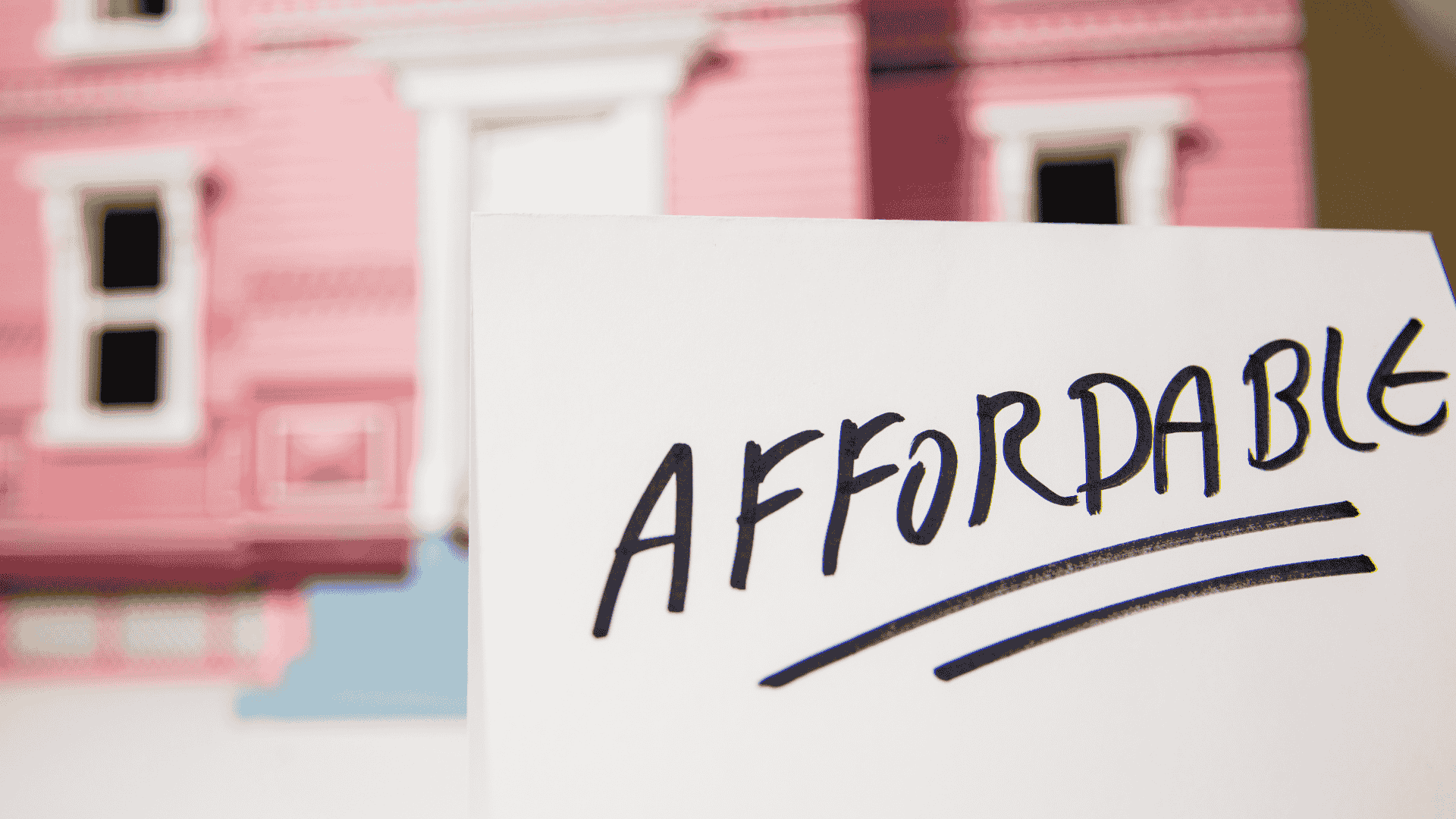Top 5 Least (and Most) Affordable U.S. Housing Markets
The 5 Least and Most Affordable Housing Markets in the U.S. (May 2025)
FREE DOWNLOAD: 10 Costly Mistakes Foreigners Make Buying U.S. Real Estate
For international real estate investors, understanding housing affordability is crucial. It directly affects where you can buy rental properties. It also impacts long-term appreciation and cashflow. Knowing which markets are affordable (and which are not) helps you make smart choices.
This article looks at U.S. housing affordability in May 2025. We will show the top five most affordable markets. We will also show the top five least affordable markets. This information comes from a recent Realtor.com report. We will explain what this means for real estate investors like you.
Investment Properties: Browse Turnkey Investment Properties in our Online Portal
Key Takeaways: Affordability & Investor Opportunities
- Affordability Matters: How much income is needed to buy a home is key. It shows market health and rental demand.
- 30% Rule: A common guide says housing costs should be 30% or less of your income. Few major U.S. markets meet this.
- Most Affordable Markets: Cities like Pittsburgh and Detroit offer lower entry costs. They are good for consistent cash flow rentals.
- Least Affordable Markets: Cities like Los Angeles and New York demand a very high percentage of income for housing. These are challenging for homebuyers.
- Rental Demand Boost: In less affordable markets, more people rent. This creates strong demand for rental properties. This is good for international investors.
- Strategic Investing: Choosing affordable markets can lead to more stable investments. This supports long-term price appreciation and long-term wealth.
Related: The Best Places to Invest in U.S. Real Estate: States, Cities, and Neighbourhoods
Section 1: Understanding U.S. Housing Affordability
Housing affordability is about how much of your income you need to spend on a home. A common guide is the “30% rule.” This means your housing costs (like mortgage payments, taxes, and insurance) should be 30% or less of your gross income. If it’s more, housing is considered less affordable.
A recent report from Realtor.com, the May 2025 Affordability Benchmark, shows the current state. It looks at the 50 largest U.S. metro areas. The report found that only 3 of these 50 metros were affordable for median earners based on the 30% rule. This means most major U.S. cities are not affordable for the average person.
This lack of affordability for homebuyers has big effects. It pushes more people into the rental market. This creates opportunities for international real estate investors.
Related: The Best U.S. Real Estate Markets for First Time Investors
Section 2: The 5 Most Affordable U.S. Housing Markets (May 2025)
For international investors, these markets offer great entry points. They often provide better consistent cash flow rentals. This is because property costs are lower compared to potential rental income.
Here are the top five most affordable major metro areas in May 2025:
| Metro Area | % of Income for Typical Home |
|---|---|
| Pittsburgh, PA | 27.4% |
| Detroit-Warren-Dearborn, MI | 29.8% |
| St. Louis, MO-IL | 30.0% |
| Cleveland, OH | 32.0% |
| Indianapolis-Carmel-Greenwood, IN | 33.2% |
Source: Realtor.com – May 2025 Affordability Benchmark
These markets are attractive because:
- Lower Initial Investment: You can buy properties for less money. This makes it easier to start or grow your portfolio.
- Stronger Cash Flow: Lower purchase prices often mean higher rental yields. This boosts your consistent cash flow rentals.
- Stable Demand: Because homes are affordable, more people can live there. This supports both buying and renting. This leads to more stable long-term price appreciation.
Related: U.S. Real Estate Market Forecast and Expert Predictions for the Next 5 Years
Section 3: The 5 Least Affordable U.S. Housing Markets (May 2025)
These markets are very challenging for homebuyers. They require a large part of a person’s income to afford a home. While these areas might have high rents, the high property prices can make it harder for investors to get good cash flow.
Here are the top five least affordable major metro areas in May 2025:
| Metro Area | % of Income for Typical Home |
|---|---|
| Los Angeles-Long Beach-Anaheim, CA | 104.5% |
| San Diego-Chula Vista-Carlsbad, CA | 77.1% |
| San Jose-Sunnyvale-Santa Clara, CA | 72.4% |
| New York-Newark-Jersey City, NY-NJ | 66.9% |
| Boston-Cambridge-Newton, MA-NH | 64.3% |
Source: Realtor.com – May 2025 Affordability Benchmark
In these markets:
- High Entry Barriers: Property prices are very high. This means a much larger initial investment for buyers.
- Lower Rental Yields (Often): Even with high rents, the extremely high purchase prices can lead to lower percentage returns on investment.
- Increased Rental Demand: Because buying is so hard, many people must rent. This creates a large and steady pool of renters. This is a key point for international investors looking at these markets.
Related: Falling House Prices in the USA: Everything You Need to Know
Section 4: Strategic Insights for International Investors
Understanding these affordability differences is key for international real estate investors. It helps you make smart decisions for your U.S. property investment.
Focus on Rental Demand
In both affordable and less affordable markets, the need for rental housing is strong.
- Most Affordable Markets: These areas are good for buying properties that generate consistent cash flow. The lower purchase price makes it easier to achieve good returns.
- Least Affordable Markets: While buying here is tough, the high cost of homeownership means a huge demand for rentals. This can lead to high occupancy rates. However, investors must carefully check if high rents can offset the very high property prices for good cash flow.
Price Resilience and Long-Term Appreciation
Affordable markets often show more price resilience. This means their home values are less likely to drop sharply. They are not as prone to “housing bubbles” that burst. This is because:
- Sustainable Growth: Prices grow more steadily, based on real demand and local incomes.
- Broader Buyer Base: More people can afford homes, which supports overall market stability.
This stability is good for long-term price appreciation. It helps build long-term wealth more predictably. In contrast, some less affordable markets that saw huge price jumps might face bigger corrections.
Smart Investing Moves
For international investors:
- Research Deeply: Look beyond these top 5 lists. Study specific neighborhoods. Understand local job growth and population trends.
- Match Property to Market: In affordable markets, focus on properties that appeal to the general renter base. In less affordable markets, carefully analyze if rental income truly justifies the high purchase price.
- Partner Locally: A local real estate agent and property manager are vital. They can help you find the right properties. They can also manage your cash flow rentals effectively from afar.
- Consider Financing: Explore specialized financing options for non-residents. These can help you access the U.S. market.
Related: The Best U.S. Mortgage options for Foreign Nationals and Non-Residents in 2025
Conclusion: Making Informed Choices for Your U.S. Property Investment
The U.S. housing market shows a clear divide in affordability. This creates different opportunities for international real estate investors. By understanding which markets are most and least affordable, you can make smarter choices.
Focusing on affordable markets can lead to more stable investments. They offer strong potential for consistent cash flow rentals and long-term price appreciation. Even in less affordable areas, the high demand for rentals presents opportunities, but careful financial analysis is key. With smart research and the right team, you can build long-term wealth in the dynamic U.S. real estate market.
Previous Article: Cleveland Real Estate Market Report May 2025
GROW YOUR WEALTH WITH U.S. REAL ESTATE
Start your U.S. real estate investment journey today with high-quality cashflow real estate. Book a Agende uma conversa estratégica gratuita e individua with a member of our senior management team to discuss your personalized strategy.
“Having personally invested in over 120 US rental properties from overseas, I know the true value of getting the right advice and support.
David Garner – Cashflow Rentals
GROW YOUR WEALTH WITH U.S. REAL ESTATE
Start your US real estate investment journey today, and book a Agende uma conversa estratégica gratuita e individua with a member of our senior management team.
“Having personally invested in over 120 US rental properties from overseas, I know the true value of getting the right advice and support.
David Garner – Cashflow Rentals

Frequently Asked Questions (FAQs) About U.S. Housing Affordability for Investors
- Q1: What is the “30% rule” in housing affordability? A1: The “30% rule” suggests that housing costs (like mortgage, taxes, insurance) should be 30% or less of your gross income. If you spend more, housing is considered less affordable.
- Q2: Which are the 5 most affordable major U.S. housing markets for May 2025? A2: According to Realtor.com, the top 5 most affordable major metro areas are Pittsburgh, PA; Detroit-Warren-Dearborn, MI; St. Louis, MO-IL; Cleveland, OH; and Indianapolis-Carmel-Greenwood, IN.
- Q3: Which are the 5 least affordable major U.S. housing markets for May 2025? A3: According to Realtor.com, the top 5 least affordable major metro areas are Los Angeles-Long Beach-Anaheim, CA; San Diego-Chula Vista-Carlsbad, CA; San Jose-Sunnyvale-Santa Clara, CA; New York-Newark-Jersey City, NY-NJ; and Boston-Cambridge-Newton, MA-NH.
- Q4: How do affordable markets benefit international real estate investors? A4: Affordable markets offer lower entry costs for buying properties. This can lead to higher rental yields and more consistent cash flow rentals. They also tend to be more stable, supporting long-term price appreciation.
- Q5: How do less affordable markets impact rental property demand? A5: In less affordable markets, many people cannot afford to buy homes. This greatly increases the demand for rental properties. This can lead to high occupancy rates for landlords.
- Q6: Where can I find the full Realtor.com report on housing affordability? A6: You can find the complete data and analysis in the Realtor.com May 2025 Affordability Benchmark report: Realtor.com – May 2025 Affordability Benchmark.







![USA Property Investment for Foreign Buyers [2025 Guide]](https://cashflowrentals.net/wp-content/uploads/2025/07/USA-Property-Investment-for-Foreigners-Expert-2025-Guide-500x383.png)



